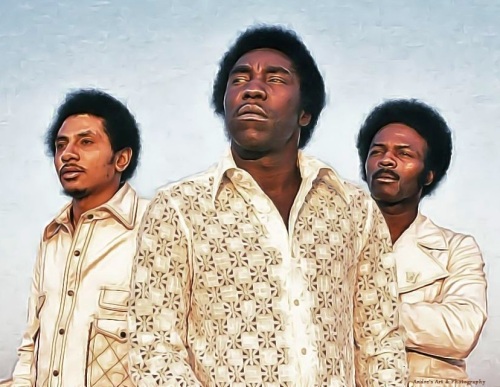
Michael Jackson shared one major thing in common with fellow Motowner Stevie Wonder: both of them had two distinct solo careers. Stevie’s was as a child prodigy musician who mostly played harmonica and bongos. And only singing a little bit. Of course his breakthrough was still on the Motown label. But on independent, fully adult terms. Michael had his first career in his early/mid teens on Motown as well. He differs from Stevie mainly in that his adult solo breakthrough came through the guidance of Quincy Jones and his crew of musicians. And it happened on the Epic label rather than Motown.
Michael’s solo career on Motown was linked very closely to the Jackson 5ive’s. His brothers often continued to sing backup for him during this time. And he continued to work with the writers and producers who made up The Corporation-the creative team who helped to create the Jacksons’ sound while they were on Motown. In addition to providing the teenage Michael with fresh new material,they also developed his strong vocal ability into that of an interpretive singer-even as his voice began to change. And it’s that first solo career (from 1972 to 1975) that I want to represent Michael Jackson with today.
“I Wanna Be Where You Are”/1972
This is probably my personal favorite of Michael’s solo hits from before his voice really changed. The rhythm guitar/harpsichord heavy uptempo funkiness has a strong J5 flavor still. But Leon Ware and T-Boy Ross’s songwriting has a lot of those jazzy chord changes,from major to minor,that Stevie Wonder and Smokey Robinson were using at the time. Michael handles the melodic complexity of the song with seeming ease and emotional power.
“Ain’t No Sunshine”/1972
With it’s fuzzed out guitar and slow shuffling beat,this Bill Withers cover comes instrumentally right out of the early P-Funk albums from Funkadelic in 1970-71. But it’s raw blusiness is slickened up far more than anything George Clinton was doing at this time. Always loved Michael’s spoken intro where he says “you ever want something that you know you shouldn’t have? The more you know shouldn’t have it,the more you want it”.
“People Make The World Go ‘Round”/1972
One thing that really makes this song stand out as an interpretation is how much different it is from the Stylistics original. Thom Bell’s slow tempo is raised up a notch,and the music is a more less orchestrated. Not only that but the lyrics are simplified,to the point of being totally altered,to make more sense that a 14 year old is singing it. It was a moment when someone else’s song was tailored more to Michael’s maturity level-rather than the more experienced and adult sociopolitical elan of the original.
“Shoo-Be-Doo-Be-Doo-Da-Day”/1972
This Stevie Wonder interpretation is amazing. It sounds based more on the faster,more clavinet driven live versions Stevie performed in the late 60’s than the studio original. Also Michael begins utilizing more of the vocal hiccups and ad libs from his Epic era solo career here. What shocked me is to hear the chorus at the very beginning sung in Michael’s fully changed adult voice,but the rest in his higher childhood one. Almost as if vocal parts were recorded at totally different times.
“All The Things You Are”/1973
Michael Jackson became fascinated with the Philly soul sound of Gamble & Huff during his mid teens. And this interpretation of the Oscar Hammerstein and Jerome Kern showtune really showcases the orchestral proto disco funkiness spirit of the city of brotherly love. Michael utilizes his changing voice beautifully here-singing the more dramatic parts in his childhood voice and the more nuanced ones in his mature voice.
“Euphoria”/1973
Leon Ware provided this jazzy,cinematic mid tempo Clavinet/string orchestration based funky soul to Michael Jackson at a time when he was right on the cusp of finding his identity as a solo performer for Motown. He’s spelling the words out of the song title in the manner a parent might do for a child. Yet the choruses make it clear Michael is really beginning to understand the meaning of the word euphoria.
“We’re Almost There”/1975
Michael’s voice had fully matured by the time his final Motown album Forever,Michael dropped in early 1975. This amazingly cinematic groove from Brian and Eddie Holland-with it’s funky wah wah and high stepping Afro Brazilian dance rhythm really allowed Michael’s voice to soar to the romantically hopeful revelry of the lyrics.
“Dapper Dan”/1975
This album track from the Forever,Michael is the one song from that album that you won’t find on any of the many Motown era solo Michael Jackson best of compilations out there. But it is by far the funkiest song on the album. Written primarily by Hal Davis,it channels the sort of New Orleans stomp that an Allen Toussaint might cook up for Dr.John at that time. And showcases Michael getting down hard with some super heavy funk.
Michael Jackson has been dead for seven years as if this writing. I was motivated to explore this side of Michael’s artistry because it showcased his personal interests guiding those people still guiding Michael. And his first four solo albums recorded on Motown helped prepare him to develop his focus in terms of the kinds of writers,producers and musicians he’d work with as a grown adult. His second solo career is well illustrated in the Guinness Book Of World Records. But his solo trajectory really took off while still on Motown.




